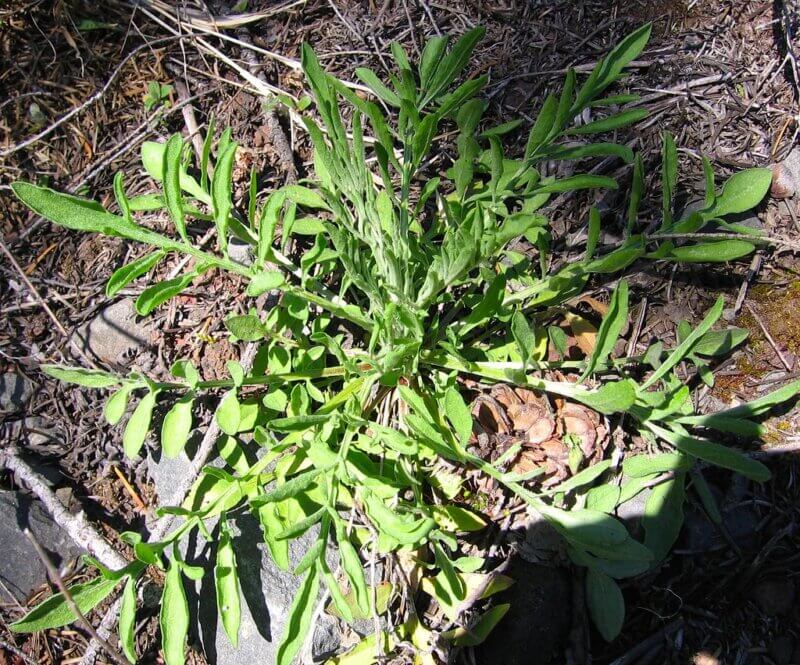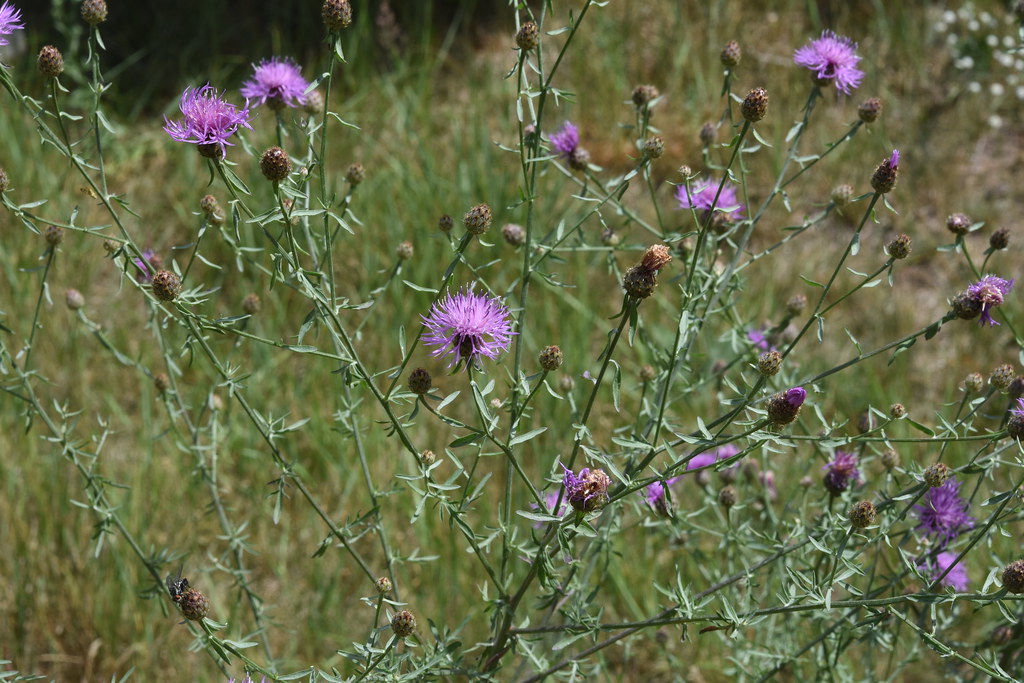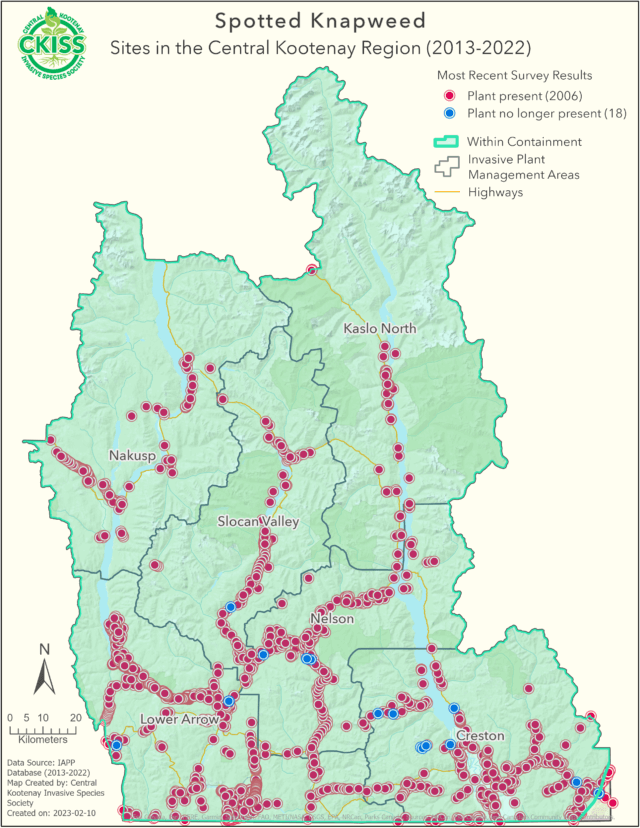Centaurea stoebe
Identification
- There are several species of invasive knapweed found in the CKISS region, but Spotted Knapweed is the most common.
- Flowers are typically purple, but can also be white.
- Bracts on flower heads are dark, appearing like spots.
- Plants can live up to five years
- Produces only a basal rosette in the first year, flowering in later years.
- Basal rosette leaves are larger, and deeply lobed.
- Leaves of mature plant are less complex, and become smaller up the stem.

Introduction and spread
- Native to Eastern Europe, spotted knapweed is now found across North America.
- This plant was first observed in Canada in 1893.
- In BC, a single plant can produce up to 900 seeds (seed production varies by environmental conditions).
- Seeds can be easily transported on equipment, boots, tools, contaminated hay or by animals.
Consequences of invasion
- Spotted knapweed is “allelopathic.” This means that it releases a chemical into the soil which makes it hard for other plants to grow.
- This strategy creates more space for spotted knapweed to grow, reducing biodiversity in ecosystems that it invades, grasslands are particularly at risk.
- Spotted knapweed can also invade rangelands, decreasing the amount of food available for livestock or wildlife.
- Knapweed infestations can change the way water flows through soil, increasing runoff.
Status in the CKISS region
- Spotted knapweed has become widespread in the CKISS region, and its management priority is classified as Strategic Control on the CKISS Annual Priority List.
- While it is not realistic to eradicate this species at the landscape level, this species may be treated at high priority sites (e.g. wildlife habitat, corridors of spread, adjacent to agricultural land, restoration sites, etc.) based on specific land management objectives.
- There is small portion of the Creston Invasive Plant Management Area where spotted knapweed is classified as Contain. The goal is to contain current infestations in this area and prevent further spread.
- If you notice this plant growing outside of containment, please report it!
- To learn more about how CKISS classifies and manages invasive species, see our Invasive Species Priority Lists page.
Integrated pest management options
Prevention
- Prevent knapweed seeds from spreading into new areas by keeping equipment, boots and vehicles clean.
- Become PlantWise to avoid introducing knapweed to your garden.
Mechanical control
- Small infestations can be hand-pulled. As the seeds can remain viable in the soil for many years, regrowth may occur. Monitor area in future years and continue to remove plants.
- For medium infestations, mowing to remove flower heads before plants have set seed can help to reduce spread. Be sure to clean your equipment after doing this to prevent spread!
Biocontrol
- Two biocontrol agents have been released in BC to help control knapweed. These are a seed head weevil (Larinus minutus Gyllenhal) and a root weevil (Cyphocleonus achates Fahraeus)
Additional resources



